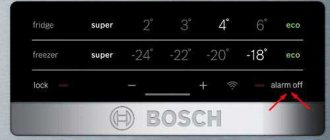Setup process
Before you decide to set up your electronic floor scales, you need to insert the battery and test the device. This will allow you to find out information about serviceability even in the store.
The basic settings include several main steps:
- Floor scales should only be placed on a perfectly flat surface in a strictly horizontal position. A floor with a smooth texture is best. Carpets, uneven surfaces, and protruding elements are not suitable under any circumstances. They may increase measurement error.
- If you don’t know how to check electronic scales, then first of all you need to turn them on and start working. This is done using a button or by touching the sensor surface. After this, a zero count is displayed and this allows us to say that the device is ready for use. Some models may turn on when weighing. You can find out more about the method in the data sheet. All data is displayed there.
- Scarlett scales only work accurately when the person stands up straight and their legs are parallel to each other. This is necessary so that the mass is evenly distributed and accurate indicators are displayed. Typically, sensors are located on two sides of the center. It must be remembered that the stability of the device when first turned on will subsequently affect the correctness of the readings. We configure a huge number of models automatically during the first launch.
IMPORTANT! If there are any additional functions, it is better to find out about the specific settings in the instructions. After completing all the procedures, you should not have any questions about how to set up the scales.
When is it better not to weigh yourself?
Don't weigh yourself immediately after your workout. The fact is that any physical activity leads to a loss of water weight, which means that the numbers on the scales will be inaccurate. So you shouldn’t actively engage in sports on the eve of weighing.
Egor:
If you usually weigh yourself on Monday, then don't plan an intense workout on Sunday evening: during this you will lose a lot of water and your body will not have time to recover. In the morning the weight will be less than usual, but during the day the water balance will be restored and the scales will show an increase again. To be on the safe side, try to avoid intense workouts for about a day or two before your weigh-in.
Photo: istockphoto.com
The expert notes that diet also needs to be taken into account. If you reduce your carbohydrate intake, the number on the scale will be lower. The fact is that a carbohydrate-free diet disrupts the water balance, and already in the first days of such a diet you can lose several kilos. This is due to the fact that 1 g of carbohydrates “retains” 4 g of water in the body. That is, when we eliminate carbohydrates, we lose water, not excess fat.
Check for accuracy
How to check scales for accuracy? Many people ask this question. Modern options can guarantee only a small deviation from the required measurement value. The maximum permissible deviation is up to 0.4 kg. To check the measurement error, you can carry out several weighings at once, without being distracted by anything, and subtract the minimum from the maximum mark. Most often, such a check reveals that the permissible error has been exceeded. In this case, the malfunction may lie in the operation of the sensors.
IMPORTANT! If sc scales are for weighing people, then they won't be suitable for things. This may damage the device. It is best to immediately study the instructions for electronic scales.
Many new models of electronic scales today have a reset function. Most often, the button is located at the bottom and allows you to completely reset all data. To press it, you must carefully turn the product over and turn it on. If this does not help, then it is best to take the floor-standing devices for repair or purchase a new component.
When purchasing, you need to pay attention to the manufacturer of the scales, the presence of positive reviews about the product, as well as the build quality. All this will directly affect both the accuracy and durability of the application.
If you do everything correctly right away when you first start it, you will ensure trouble-free operation. In this case, the error will be of small importance and will not seriously affect the final result. Further adjustment of the scales will also ensure good service life and correctness of the data obtained. Remember that mechanical devices will never provide the same precision as electronic ones. That is why the second component is now becoming widespread.
How to properly set up your bathroom scale the first time you turn it on
First of all, setting up the scale is to place it on a hard and level surface. If you do not ensure a stable position, the device may operate with errors. The further correct operation of the device depends on the location of the scales during the first switch-on.
Today there are a huge number of models on the market. They differ in the set of additional functions, as well as measurement accuracy. Each manufacturer has its own distinctive features. For example, there are differences when turning it on: in some models it is done by gently touching it, in others – by standing on the platform. There are models with a fat, muscle and water analyzer.
To get the most accurate data, you need to stand on the measuring device correctly. To do this, your feet should be placed parallel. Thanks to this position, the correct distribution of body weight occurs, which guarantees the correctness of the data.
Storage conditions
If you have a question about how to set up electronic scales, then another question should arise about how to handle them correctly. When using the device, you must remember about safety. To do this, it is best to immediately follow several main points that will help you use the device for a long time.
Among these it should be noted:
- It is best to store electronic scales on isolated surfaces, away from heating devices. If you don't use them every day, you can even put them away from your everyday places.
- Completely remove temperature changes, high humidity, mechanical stress, dust and dirt, as well as sunlight. This also applies to electronic commercial scales, which must also be configured upon first use.
- If you decide to clean the platform, then you should take a damp cloth for this, and a dry one for the base. The use of chemicals is not recommended.
- If the scales are used in rooms with high humidity or where water may enter, this will lead to destruction of the metal parts. Subsequently, this will affect the accuracy of the measurements taken.
- Under no circumstances should you subject the scale to physical force or jump on it. All this will lead to breakdowns, as well as cracks on the surface. In either case, accuracy deteriorates.
If you provide such decent storage conditions, the scales will be able to work for a long time. In order for floor scales to be used for a very long time, it is better not to neglect the operating conditions.
Handle them carefully. Conventional elements can support a person's weight up to 216 kg. If you exceed this mark, the electronic bathroom scale may damage its mechanism.
You also need to pay attention to the integrity of the case, because the accuracy of further measurements will directly depend on this. If there are cracks, they will have a negative impact on the overall values.
If all the above requirements are met, the scales can have a long service life and provide only accurate measurements. The information obtained from electronic scales allows you to control your appearance and weight. Now there are a huge number of manufacturers, each of which can offer a decent option. And now you know exactly how to weigh yourself correctly using electronic floor-standing devices.
Setting up electronic scales before starting work
Before using the scale for the first time, it must be installed, calibrated and configured. First of all, you need to remove the protective covering of the battery compartment and insert the batteries into it, not forgetting about the polarity (it must match the battery and the terminals in the compartment). The scale display shows LO when the batteries fail and require replacement. If the scale is rarely used, the batteries can be removed.
Some models of scales are equipped with alternative energy sources and are powered by the sun or by converting mechanical energy during weighing.
To begin work, after the batteries have been inserted, the device must be placed on a flat, hard surface, preferably level. The accuracy of measurements depends on this. For example, a soft carpet is not suitable, the values will float and not correspond to the actual ones. Ideally, the scale should be kept in one place at all times. This way their position will not affect the result.
To adjust the sensor, you need to press on the scale platform; in most scales, the desired point is in the upper right corner. The display will show 88:88, after which 0.0 or simply 0 will appear. This signals readiness for work.
What types of weighing instruments are there, how are they designed?
The most ancient scales are considered to be those found by archaeologists in Mesopotamia, dating back to the 5th century BC. They had a lever structure - two equal arms, on each of which there was a bowl. With the advent of technological progress, scales have undergone many modifications. Today, there are four main types of devices for determining mass, differing in their operating principle:
- lever - based on the principle of leverage described by Archimedes;
- spring - the operating principle is described by Hooke's law;
- hydrostatic - measuring the specific gravity (density) of a substance;
- strain gauges - the measuring device in them is a sensor that converts strain into electrical impulses.
In everyday life, spring (mechanical) and electronic (tensometric) scales are mainly used. They will be discussed further.
Mechanical
Mechanical scales are well known to everyone; their operation is based on a spring that stretches or compresses in accordance with the force applied to it.
In mechanical scales, the pointer is deflected by a spring.
When weighing on mechanical scales, a person stands on a movable platform, which lowers under the influence of body weight. The spring compresses, the arrow associated with it deflects, indicating the weight.
Disadvantages of mechanical scales:
- low measurement accuracy - up to one kilogram;
- spring degradation over time - accuracy decreases even more.
Video: how a floor-standing weighing device works
Electronic
Electronic scales look like a monolithic body mounted on four support legs; the device is equipped with a digital display for displaying weight and a battery power supply.
Readings are easy to read on the contrast screen of electronic scales
Electronic scales have no moving or rubbing parts; they have high measurement accuracy - 100–300 g. Thanks to modern materials, instruments of a wide variety of designs are produced. The electronic circuit expands the capabilities of the scale: the device receives measurement memory and can also perform simple calculations, including displaying the body mass index (BMI).
Useful tips
There are several practical recommendations that will help you set up your scales for home use:
- Change the location of the measuring device. Visually, a person may not even notice that the scales are uneven, and this leads to errors in the operation of the sensors.
- Check the legs of the scale for any foreign objects that may cause it to not function properly.
- Change the batteries in your bathroom scale yourself.
Replacing the battery
In order for the measuring equipment to show the correct result, the device should be placed on a flat surface. Otherwise, the quality and life of its operation depends on the manufacturer and the chosen model.
Limits and accuracy of weighing scales
Maximum weighing limit (LLV)
Every scale has a maximum mass that it can measure. It is defined in the documentation of the device and is often shown on its body. This maximum weight is called the largest weighing limit (or TLV for short). If you try to weigh a load heavier than the LEL, the device will most likely display either an incorrect weight or an error message. Often the NEL value for scales is the most important characteristic.
Lowest weighing limit (LmPV)
Any scale has a limit on the minimum mass that it can measure. This is called the smallest weighing limit (or LLM for short).
Scale scale
The range between the LLE and NmL is called the weight scale. This definition has passed into terminology from mechanical scales, where the range between the LLE and NmL is actually depicted by a scale with divisions along which the arrow slides. In electronic devices there are no scales or divisions, but there are maximum and minimum possible numerical values on the indicator and discreteness (step of change) of numerical readings. Nevertheless, in the old fashioned way they talk about a scale of scales, with NmPV considered the zero of the scale, and NPV its point. Often this representation is quite convenient.
Weighing errors and scale divisions
Body weight cannot be measured with absolute accuracy. The result of weighing is, in general, a value determined by a combination of various factors: the sensitivity of the scales, the correctness of their installation, temperature conditions, experience and even the psychophysical state of the operators... Therefore, the weight is always determined with some error. Based on the nature of their manifestation, errors are distinguished between random and systematic.
Systematic is a component of measurement error that remains constant when the same load is weighed repeatedly. It can be caused by the following reasons: improper installation or assembly of the scales, incorrect manufacturing (factory defects), insufficiently precise adjustment of the weights, fatigue changes in the elastic parts of the scales (in particular, their natural aging) and other factors. Systematic errors do not manifest themselves outwardly. They are detected, for example, when checking the zero of the scale or the sensitivity of the scales during state verification. Random is the component of error that changes randomly during repeated weighing of the same load.
The concept of error is necessary to determine the accuracy of weighing and to compare different scales with each other. The documentation usually provides the maximum absolute and relative errors (the sums of the corresponding maximum systematic and maximum random). Maximum, because as you move from zero to a point on the scale, the error value increases. If it grows very strongly, the scale is divided into ranges and the maximum absolute and relative errors for each of them are indicated.
To measure more accurately, it is necessary to manufacture complex, and therefore expensive, instruments. Moreover, the more accurate the weighing, the more time it takes. In other words, it is impossible to weigh both quickly and accurately. Therefore, in the case of commercial scales, both manufacturers, consumers, and Gosstandart came to some compromise that optimally combined the cost of scales, time and weighing accuracy.
Weighing accuracy and scale accuracy classes
In the case of static weighing instruments, there are only two accuracy classes: medium and normal. Scales with more than 500 calibration divisions corresponding to the standard limit are classified as weighing instruments of the middle accuracy class and are marked with sign III. If this parameter is 500 or less, the devices are classified as weighing instruments of normal accuracy class and are marked with the sign IIII. In other words, for scales with an analogue reading device (for example, a rocker scale balancing device or a dial device), the average accuracy class means that more than 500 smallest scale divisions fit on the scale. And for devices with a discrete digital indicator, the average accuracy class means that the maximum limit of these scales consists of more than 500 units of weight values of the least significant digit of the scale indicator (provided that the error of the scales coincides with the discreteness of the reading). All scales used in trade correspond to the average accuracy class.
Video: Floor scales Mirta SCE 315 C, unboxing, review
Among them, without a doubt, there are also quite high-quality copies, but the list of complaints about the products from the list presented above is quite wide:
- the device shows a different weight each time with a range from three hundred grams to two to five kilograms
- The device discharges batteries when switched off.
- uneven weight distribution over the surface of the device or too small / too large feet give different results with each new approach
- breathing during weighing gives a difference of 400-800 grams
the device is extremely sensitive to millimeter levels of inclination of the base surface
- the electronic unit of the scale reacts to changes in room temperatures, greatly distorting the results
- the device stops responding if you quickly stand on it several times in a row, continues to work only after a reboot
- they give the same weight three times out of seven, you have to weigh yourself many times in a row
- long-term storage in a vertical position once and for all disrupts the already imperfect accuracy of the device
Choose scales from trusted manufacturers and always worry about providing yourself with a real opportunity to return or exchange a low-quality product. In this product category, a high price usually indicates the real quality of the product.










